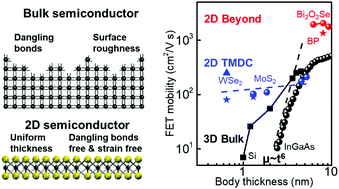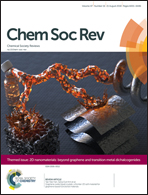Two-dimensional transistors beyond graphene and TMDCs
Abstract
Two-dimensional semiconductors (2DSCs) have attracted considerable attention as atomically thin channel materials for field-effect transistors. Each layer in 2DSCs consists of a single- or few-atom-thick, covalently bonded lattice, in which all carriers are confined in their atomically thin channel with superior gate controllability and greatly suppressed OFF-state current, in contrast to typical bulk semiconductors plagued by short channel effects and heat generation from static power. Additionally, 2DSCs are free of surface dangling bonds that plague traditional semiconductors, and hence exhibit excellent electronic properties at the limit of single atom thickness. Therefore, 2DSCs can offer significant potential for the ultimate transistor scaling to single atomic body thickness. Earlier studies of graphene transistors have been limited by the zero bandgap and low ON–OFF ratio of graphene, and transition metal dichalcogenide (TMDC) devices are typically plagued by insufficient carrier mobility. To this end, considerable efforts have been devoted towards searching for new 2DSCs with optimum electronic properties. Within a relatively short period of time, a large number of 2DSCs have been demonstrated to exhibit unprecedented characteristics or unique functionalities. Here we review the recent efforts and progress in exploring novel 2DSCs beyond graphene and TMDCs for ultra-thin body transistors, discussing the merits, limits and prospects of each material.

- This article is part of the themed collection: 2D nanomaterials: beyond graphene and transition metal dichalcogenides


 Please wait while we load your content...
Please wait while we load your content...